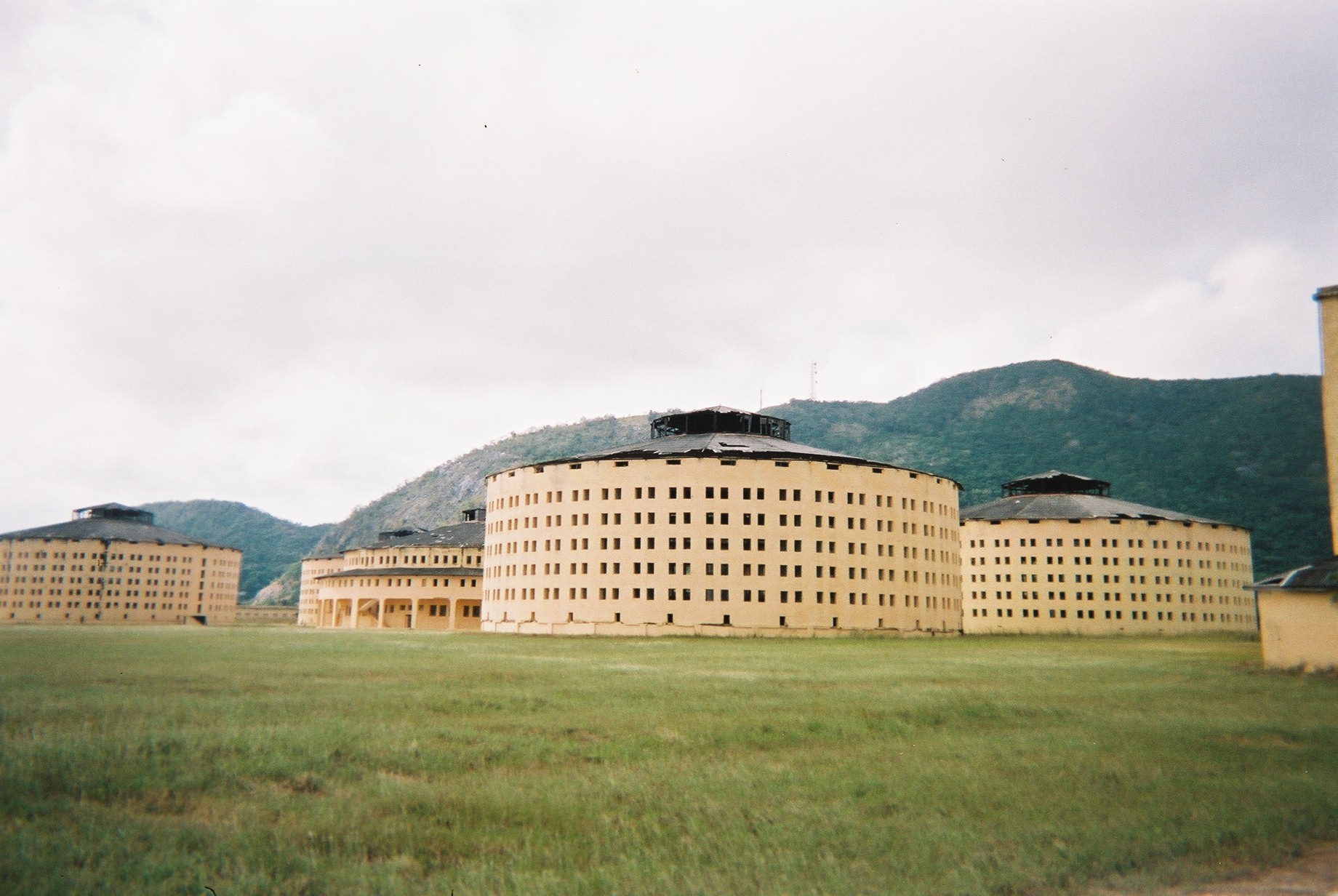Presidio Modelo on:
[Wikipedia]
[Google]
[Amazon]
 The Presidio Modelo was a "model
The Presidio Modelo was a "model
 The prison was built under the President-turned-dictator Gerardo Machado between 1926 and 1928. The five circular blocks, with cells constructed in tiers around central observation posts, were built with the capacity to house up to 2,500 prisoners. The panopticon design allowed the guards to watch the prisoners constantly.
Most of the survivors of the rebel attacks on
The prison was built under the President-turned-dictator Gerardo Machado between 1926 and 1928. The five circular blocks, with cells constructed in tiers around central observation posts, were built with the capacity to house up to 2,500 prisoners. The panopticon design allowed the guards to watch the prisoners constantly.
Most of the survivors of the rebel attacks on
prison
A prison, also known as a jail, gaol (dated, standard English, Australian, and historically in Canada), penitentiary (American English and Canadian English), detention center (or detention centre outside the US), correction center, corre ...
" with panopticon design, built on the Isla de Pinos ("Isle of Pines"), now the Isla de la Juventud ("Isle of Youth"), in Cuba
Cuba ( , ), officially the Republic of Cuba ( es, República de Cuba, links=no ), is an island country comprising the island of Cuba, as well as Isla de la Juventud and several minor archipelagos. Cuba is located where the northern Caribbea ...
. It is located in the suburban quarter of Chacón, Nueva Gerona
Nueva Gerona is a Cuban city, capital of the Isla de la Juventud special municipality and province. As of 2012, its population was 59,049.
History
The city was founded in 1830 by Francisco Dionisio Vives, who was the Spanish governor of Cuba a ...
.
History
Moncada Barracks
The Moncada Barracks was a military barracks in Santiago de Cuba, named after General Guillermo Moncada, a hero of the Cuban War of Independence. On 26 July 1953, the barracks was the site of an armed attack by a small group of revolutionaries ...
in July 1953 – including Fidel Castro and his brother, Raul Castro
Raul, Raúl and Raül are the Italian, Portuguese, Romanian, Spanish, Galician, Asturian, Basque, Aragonese, and Catalan forms of the Anglo-Germanic given name Ralph or Rudolph. They are cognates of the French Raoul.
Raul, Raúl or Raül may r ...
– were imprisoned there, most of them until 1955. At that time, the four circular buildings were packed with 6,000 men, every floor was filled with trash, there was no running water, food rations were meagre, and the government supplied only the bare necessities of life. However, Castro and the other rebels were not kept in the circular buildings with their small cells and harsh conditions, but were instead kept in the hospital wing, which had a larger living area with better beds and living conditions.
The dictator Fulgencio Batista had made the mistake of placing all the conspirators together in the hospital wing, and they proceeded to treat it as a revolutionary boot camp, congregating for daily lessons on politics and conducting secret communications with supporters around Cuba. "What a fantastic school this prison is!" Castro wrote in a letter. "From here I’m able to finish forging my vision of the world...".
After Castro's revolutionary triumph in 1959, Presidio Modelo remained in operation. By 1961, due to the overcrowded conditions (up to 4000 prisoners at one time), it was the site of various riots and hunger strike
A hunger strike is a method of non-violent resistance in which participants fast as an act of political protest, or to provoke a feeling of guilt in others, usually with the objective to achieve a specific goal, such as a policy change. Most ...
s, especially just before the Bay of Pigs invasion
The Bay of Pigs Invasion (, sometimes called ''Invasión de Playa Girón'' or ''Batalla de Playa Girón'' after the Playa Girón) was a failed military landing operation on the southwestern coast of Cuba in 1961 by Cuban exiles, covertly fin ...
, when orders were given to line the tunnels underneath the entire prison with several tons of TNT
Trinitrotoluene (), more commonly known as TNT, more specifically 2,4,6-trinitrotoluene, and by its preferred IUPAC name 2-methyl-1,3,5-trinitrobenzene, is a chemical compound with the formula C6H2(NO2)3CH3. TNT is occasionally used as a reagen ...
.
Prominent Cuban political prisoners such as Armando Valladares
Armando Valladares Perez (born May 30, 1937) is a Cuban-American poet, diplomat and former political prisoner for his involvement in the Cuban dissident movement.
In 1960, he was arrested by the Cuban government for conflicting reasons; the C ...
, Roberto Martín Pérez, and Pedro Luis Boitel
Pedro Luis Boitel (May 13, 1931–May 25, 1972) was a Cubans, Cuban poet and dissident who opposed the governments of both Fulgencio Batista and Fidel Castro. In 1961, he was sentenced to 10 years in prison.
Boitel died during a hunger strike in ...
were held there at one point or another during their respective incarcerations. It was permanently closed by the government in 1967.
The prison now serves as a museum and has been declared a national monument. The old administration building now serves as a school and research center.
See also
*Human rights in Cuba
Human rights in Cuba are under the scrutiny of Western human rights organizations, which accuse the Cuban government of committing systematic human rights abuses against the Cuban people, including arbitrary imprisonment and unfair trials. Intern ...
References
External links
{{Coord, 21, 52, 40, N, 82, 45, 59, W, type:landmark, display=title 1920s establishments in Cuba Buildings and structures in Isla de la Juventud Defunct prisons in Cuba Museums in Cuba Nueva Gerona Prison museums in North America Tourist attractions in Isla de la Juventud